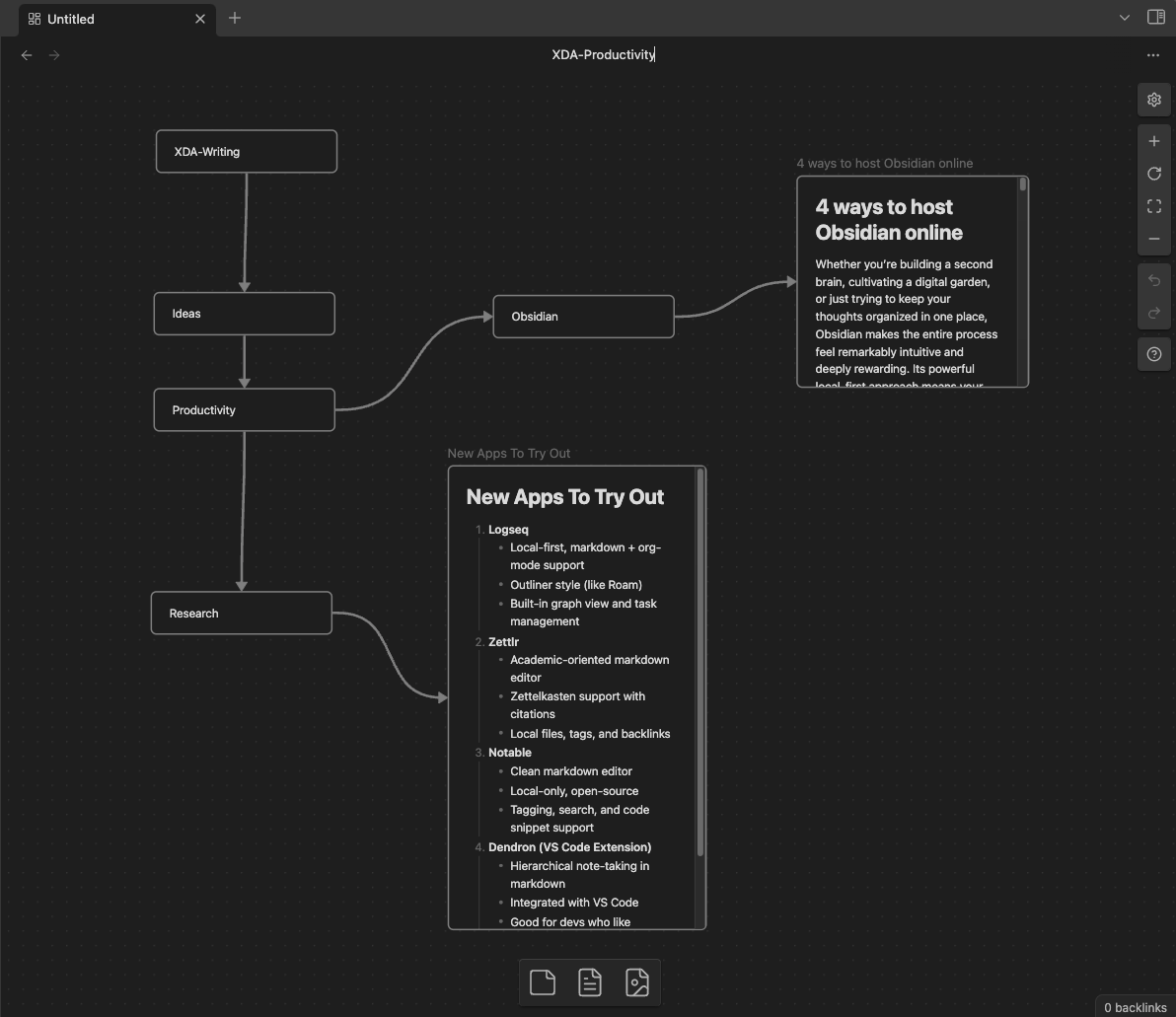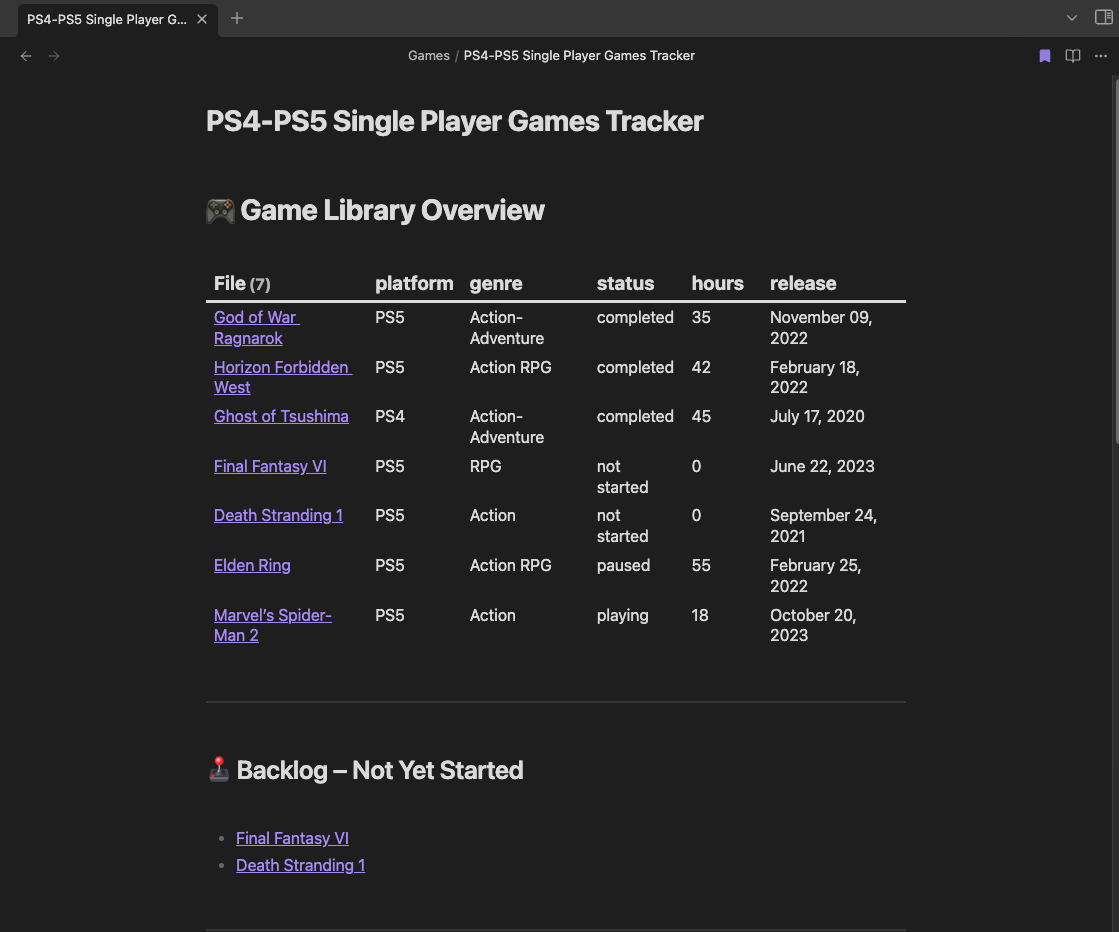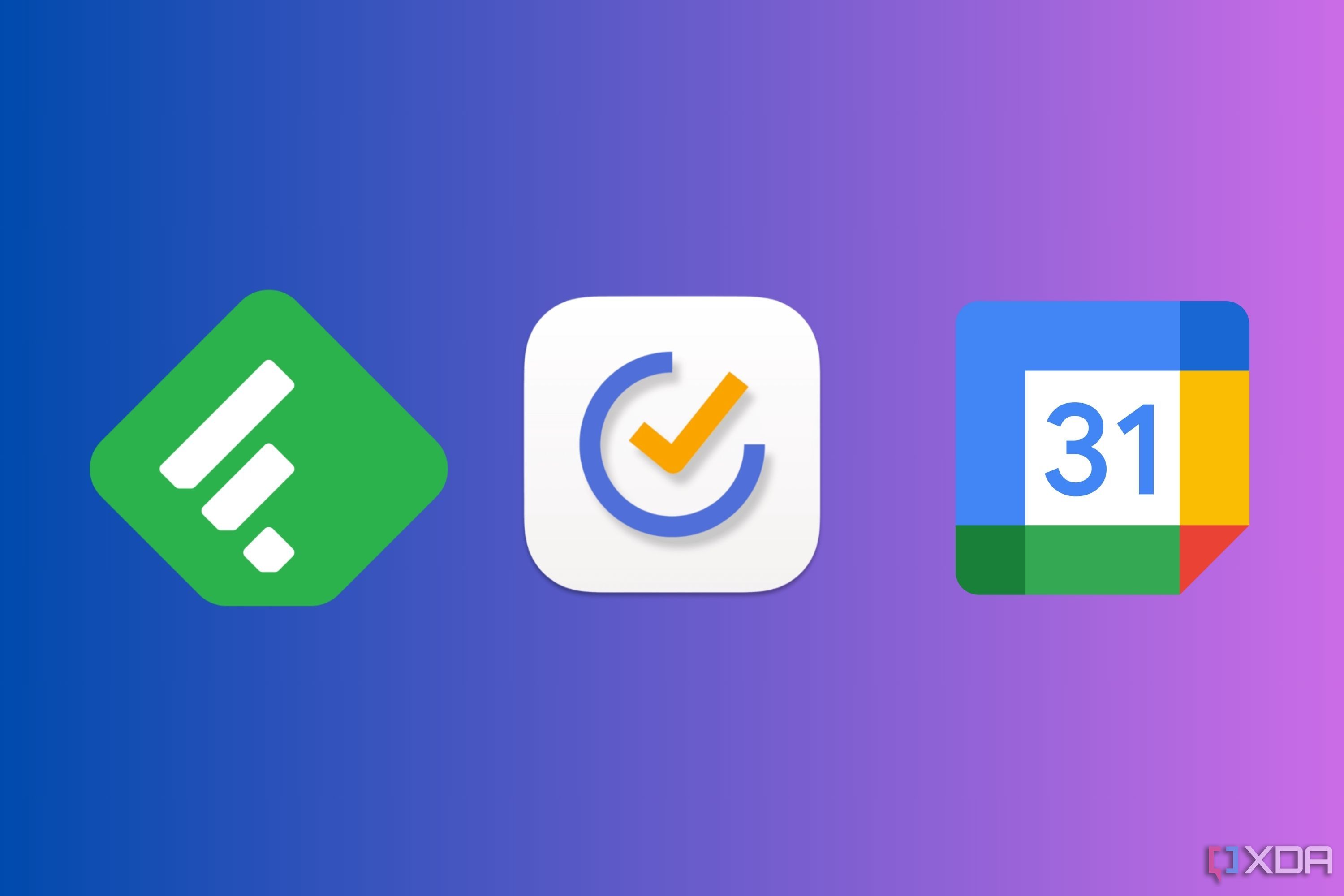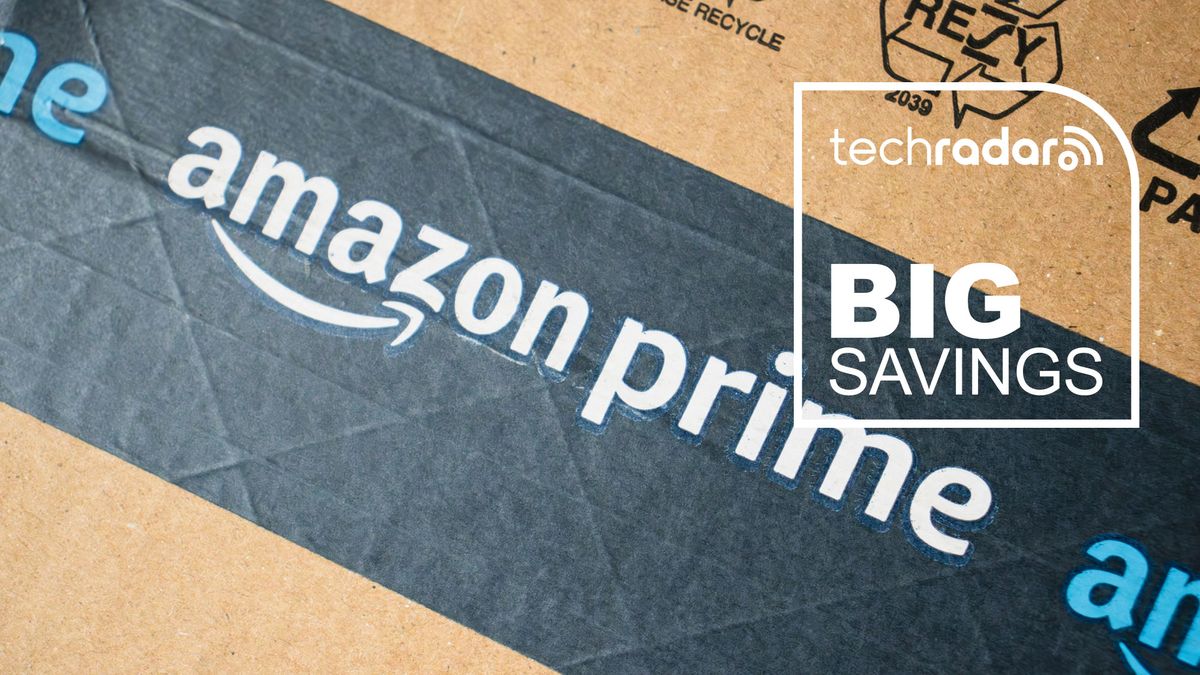Obsidian is the gateway towards improving personal productivity for most. Really, I was just looking for a better way to organize my notes. What I didn’t expect was that it would become the nerve center or dumping ground for everything I do. I’ve always struggled with the friction between ideation and execution, especially when juggling research, deadlines, and multiple deliverables across teams. Traditional task managers and project tools felt rigid and often got in the way more than they helped. But Obsidian's combination of structure and flexibility just clicked for me. It let me build a workflow that mirrors how I think — visually, contextually, and with the freedom to zoom in and out as needed.
At the heart of this workflow are two powerful plugins: Canvas and Dataview. Canvas gives me a bird’s-eye view. It’s where I map out the messy ideas before they turn into action. Dataview, on the other hand, is how I automate structure. It’s like a live dashboard that pulls meaning out of my markdown chaos. The plugin is a game-changer for converting static notes into a dynamic, interconnected knowledge base. Together, they supercharge the Obsidian experience for me, and might do the same for you.
Post-it notes for your digital second brain
Planning, rearranging, and rethinking in Obsidian canvas

Obsidian's Canvas view is a significant factor in why I keep coming back to the app despite trying out dozens of productivity apps. The view is designed to feel like a whiteboard where every note, idea, and link can float freely. I use it as the first step in planning out any major project. Whether I’m organizing a long-form writing piece, doing preliminary research, or coordinating content across multiple platforms, Canvas View is my go-to destination.
There’s something freeing about being able to drag notes around, link them, and reposition them without breaking the structure of the underlying vault. I’ll usually start by creating cards for the big pillars of the project, like objectives, deliverables, deadlines, and then branch out into smaller cards for tasks, reference notes, or even inline thoughts. Sometimes, these cards are placeholders, but Obsidian makes it easy to include existing notes into the Canvas. In fact, you can even link multiple Canvas views to create project-specific hierarchies. The spatial layout helps me understand the relationships and gaps in a way that a linear list never could.
This setup shines when dealing with early-stage ideas or projects that still feel ambiguous, like outlining a content strategy for a new client or pulling together sources for a deep-dive feature. Instead of forcing a rigid structure too early, Canvas lets me work through the chaos. I can toss in draft outlines, notes from meetings, style references, even rough timelines, and arrange them visually until something clicks. And seeing everything laid out like this helps me think more clearly, without losing the bigger picture or overall approach towards an article.
Turning data-driven notes into a system
How I use Dataview to surface what matters

Once I’ve sketched things out in Canvas, I bring in the Dataview plugin to make sense of the finer details. Dataview works like a query language for your notes. I use metadata obsessively. Fields like status, priority, due, and project are the backbone of my Obsidian vault. Every note that’s part of a project gets tagged with relevant tags. Then, using Dataview, I create live dashboards that automatically surface tasks by priority, group notes by project phase, or flag anything that’s overdue.
For example, Dataview helps me track article pitch submissions. Each pitch note has fields like outlet, editor, status — pitched, accepted, published — and payment. I can instantly generate a table of everything that’s been pitched but hasn’t had a response, or pull a list of all the published pieces with unpaid invoices. Similarly, I use it to manage my video game library. Every game note includes fields like platform, completion status, and hours played. With Dataview, I can surface all my backlog games on the PS5, list the ones I’ve finished this year, or group everything by genre. Each note stands on its own, but thanks to Dataview, they all feed into a living system that keeps itself organized.
This approach also means I can treat each project note as a standalone artifact. It lives independently in the vault, but through Dataview, it becomes part of a bigger system. That’s the real power of Obsidian: it turns your notes into an interconnected web that can be cross-referenced from anywhere.
Why it works for me, but might not for everyone
What I’ve come to appreciate most about this setup is that it doesn’t force me to separate thinking from doing. I can stay in one ecosystem, and my workflow can shift as the project evolves. Early on, I’m in Canvas mode — zoomed out, asking questions, moving ideas around. As things crystallize, I move into execution mode with Dataview surfacing the tasks I need to focus on.
I know this system is built around how I think. It’s visual, modular, and slightly obsessive with metadata. That’s not everyone’s cup of tea. Some people might find the flexibility overwhelming. Others might prefer more structured tools like Notion or Asana. But for me, Obsidian lets me build a system that feels organic but still powerful enough to handle serious complexity.
And the best part? It’s all local. No servers, no subscriptions, no vendor lock-in. Just markdown files, quietly working together in a system that feels more like an extension of my brain than a piece of software. Start with a Canvas. Tag your notes. Add a few Dataview queries. You might be surprised by how quickly you can wrangle information you didn’t know how to organize before.
.png)












 English (US) ·
English (US) ·